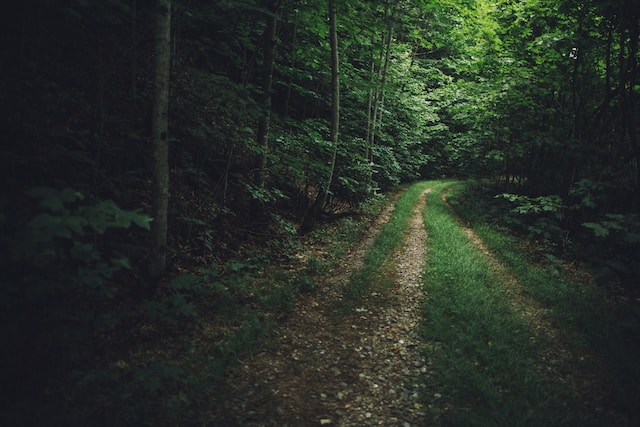We often fall into ruts. We drive the same route to work. We go to the same restaurants when we can’t face another night of our own cooking. We return to the same stores. We even vacation in the same locales year after year.
There’s nothing wrong with a good rut or two. After all, in a chaotic world, craving the familiar is okay—we enjoy the simplicity and the comfort of routine.
But while no-brainer routines may offer comfort to us in our daily life, that kind of repetitive normalcy can be the kiss of—gasp!—boredom for our storytelling.
One way to break out of our fiction ruts is to take a hard look at our settings.
Some settings are incredibly common in fiction. Characters are forever sitting in cars, eating in neighborhood restaurants, hanging out on school football fields, or chafing in cubicles at work. Pick up a “beach read,” and there’s a fair chance you’ll find the protagonist in a quaint little seaside inn in need of renovation. Pick up a western, and at least one scene will undoubtedly be in a saloon, while another will involve a large wooden table laden with biscuits and gravy. A murder mystery will likely involve a seedy bar and at least one poorly lit parking lot or alley.
People in mainstream novels tend to go to all the same places their authors go—grocery stores, coffee shops, school, work, pizzerias, parks, and swimming pools.
But do they have to? Can we break our characters out of the ruts we ourselves are so attached to?
Let’s try.
First, make a list of all the settings you’re using in your story. Can you spot any ruts you or your characters have fallen into? Do they keep having conversations in their car? Do they seem caught in an endless episode of “The Office,” with every scene happening in a cubicle? Do they keep returning to the kitchen for those soul-searching episodes?
Once you’ve made your list, look at every setting and ask, “Does this scene have to be set here, or did I choose this just because it was the first place I thought of?” Then consider whether choosing a different setting could strengthen the scene.
Well-chosen settings can:
- Heighten or foreshadow tension
- Reveal important aspects of your characters
- Alter the mood or atmosphere of the scene
- Preferably, all of the above
For each scene on your list, think about the scene’s purpose. What atmosphere do you want to set? What dilemma will your characters be wrestling with? Can you amplify the tension in the scene by putting your protagonist in an unfamiliar or uncomfortable setting, or maybe into a highly personal location that they don’t want to be invaded or breached?
Now, make a list of possible new locations where you can drop your characters. Try to come up with 20 to 30 different places, some commonplace (school, grocery story, work), then expand your list and start adding unusual but feasible locations for this particular character, such as art gallery, hiking trail, top of a cellphone tower, cave, historic battlefield, scuba dive shop, racetrack, private plane, ghost town, catwalk above a stage, abandoned movie set, lighthouse, tour bus, crawlspace under a house, potting shed (there are lots of sharp implements in a potting shed!), etc. Go wild! No idea is too crazy for this brainstorming step.
Next, see what would happen if you moved your scene to one of these non-ordinary locations.
You may find that a commonplace setting is exactly where the scene needs. That’s absolutely acceptable—great, even, as long as you are choosing that setting because it is the single best place to enhance or add pressure to the scene. As with every step of the writing process, make sure you’re making a decision for specific reasons and not because it was the first thing you thought of (or the easiest).
Rethinking your scene’s setting may seem like a minor change, but it may be exactly what you need to break your character (and your writing) out of a too-familiar rut.
And that might be just the thing to keep your reader reading.
[Photo by Wes Hicks on Unsplash]

